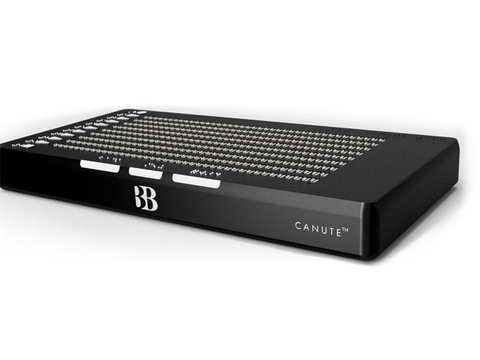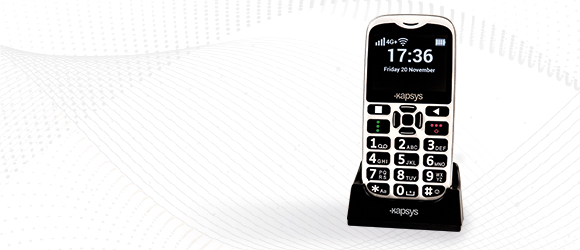Screen Readers for the Blind: Accessing Content Without Barriers
Screen Readers for the Blind: Accessing Content Without Barriers
Blog Article
Discover Ingenious Devices Developed for the Visually Damaged
The development of cutting-edge tools for the visually damaged represents a considerable improvement in access and freedom. Technologies such as clever glasses with AI abilities and mobile applications designed to give auditory summaries are reshaping day-to-day experiences for individuals.
Smart Glasses for Navigation

Smart glasses created for navigating are reinventing the means aesthetically damaged people communicate with their atmosphere. These advanced tools utilize a combination of camera technology, expert system, and auditory responses to supply real-time info about surroundings. By utilizing obstacle discovery systems, clever glasses can alert customers to potential risks, allowing more secure movement in both strange and familiar setups.
The assimilation of GPS modern technology additionally boosts navigation capacities, allowing individuals to obtain acoustic instructions as they move. This hands-free method not only promotes freedom however additionally encourages visually damaged people to browse metropolitan landscapes with raised confidence. Furthermore, many wise glasses are outfitted with functions that recognize sites and street indicators, giving contextual details that boosts the customer experience.
Additionally, the development of these devices is continually advancing, with firms working to enhance the accuracy of item recognition and expand the range of navigational attributes. As wise glasses become a lot more accessible and budget-friendly, they hold the prospective to considerably transform day-to-day live for aesthetically impaired individuals. Eventually, these innovative devices represent a critical action towards inclusivity, offering boosted movement and a higher sense of autonomy for people browsing the globe around them.

Mobile Application for Daily Living
How can mobile applications enhance the everyday lives of visually impaired people? Mobile applications are revolutionizing the method aesthetically damaged customers navigate their atmospheres, take care of day-to-day jobs, and gain access to details. These applications provide essential assistance through different functionalities, cultivating freedom and boosting lifestyle.
Several cutting-edge mobile apps are designed specifically for daily living. Apps like Be My Eyes attach aesthetically impaired users with sighted volunteers via video phone calls, permitting them to obtain real-time aid with jobs such as reviewing labels or browsing strange rooms. Similarly, Seeing AI, developed by Microsoft, uses expert system to describe environments, reviewed text, and recognize items, efficiently transforming a mobile phone into a powerful tool for daily aid.
Additionally, navigation apps customized for the visually impaired, such as Aira and BlindSquare, offer audio-based instructions and environmental details, allowing users to traverse their environments securely and with confidence. Beyond navigating and instant assistance, mobile applications likewise sustain organization and job monitoring, with functions that aid individuals set tips, create to-do listings, and track consultations. In summary, mobile applications serve as crucial sources, encouraging visually impaired people to lead even more independent and satisfying lives.
Wearable Technologies for Aid
Empowerment with technology is significantly noticeable in the world of wearable devices developed to help aesthetically impaired individuals. These cutting-edge tools integrate seamlessly into life, boosting navigation and supplying important feedback to individuals. Smart glasses geared up with cams can read and identify faces message out loud, allowing users to communicate even more with confidence in expert and social settings.
Another notable advancement is the use of haptic feedback systems in wearable tools. These systems make use of resonances or various other tactile signals to convey details concerning the user's atmosphere, such as barriers or changes in terrain, improving flexibility and security. Wearable modern technologies additionally include wristbands that attach to mobile phones, informing individuals to notifications with subtle vibrations, hence boosting connectivity without dependence on visual signs.
As these technologies remain to advance, they are not just boosting freedom for aesthetically impaired individuals but additionally promoting a better feeling of inclusion in culture. By connecting the space between difficulties encountered in everyday living and the capacity for autonomy, wearable innovations act as crucial tools in the pursuit for equal rights and empowerment for those with visual problems.
Audio Description Tools
Audio description devices play an important role in boosting access for aesthetically damaged individuals, providing them with the capacity to involve with aesthetic media. Smart glasses for the visually impaired. prescription sun glasses These tools offer narrated descriptions of key visual aspects in movies, tv shows, and live efficiencies, guaranteeing that customers can fully understand the context and feelings conveyed via visuals
Sound summary can be integrated into different systems, including streaming services, movie theater screenings, and live cinema. Many preferred streaming services now consist of audio description as an accessibility function, permitting viewers to choose it conveniently. Along with mainstream media, specialized apps additionally exist, providing audio descriptions for art events, galleries, and various other cultural events.
The efficiency of audio description hinges on the skill of the storytellers, who should share aesthetic information succinctly without sites interfering with the original sound. Advancements in this area are likewise leading the way for even more personalized experiences, where users can change the level of information and pacing according to their choices.
Braille Innovations and Instruments
Braille advancements and tools have considerably transformed the method aesthetically damaged people communicate with message and info. Modern advancements have actually led to the advancement of functional tools that enhance proficiency and freedom among customers. Significantly, Braille show modern technologies have evolved, permitting vibrant reading experiences. These tools convert electronic message right into Braille, making it possible for customers to access a large array of info on tablet computers, computers, and smart devices.
Furthermore, portable Braille notetakers integrate typical Braille input with modern-day functionalities, helping with note-taking, organizing, and document editing on the go. Mobility aids for visually impaired users. These compact devices often feature text-to-speech capabilities, connecting the gap between Braille and auditory details
In enhancement, cutting-edge Braille printers have Recommended Reading actually arised, allowing customers to generate Braille tags, papers, and academic materials successfully. This availability fosters better participation in instructional and expert settings, ultimately advertising inclusivity.
Additionally, study into smart Braille modern technologies remains to expand. Instruments that integrate synthetic intelligence are being discovered to offer real-time navigation aid and contextual info, improving the individual experience in varied setups. On the whole, these advancements reflect a dedication to equipping aesthetically impaired people with technology, guaranteeing they can quickly accessibility and involve with the world around them.

Verdict
The development of ingenious tools for the aesthetically damaged significantly improves independence and top quality of life. These innovations not just foster higher addition yet likewise promote freedom in daily activities, ultimately contributing to a much more easily accessible and equitable society for visually impaired people.
As wise glasses end up being much more accessible and economical, they hold the prospective to substantially transform everyday life for aesthetically impaired individuals. Mobile apps are reinventing the method aesthetically damaged users browse their atmospheres, manage daily jobs, and access information. Apps like Be My Eyes connect aesthetically impaired users with sighted volunteers via video telephone calls, allowing them to obtain real-time aid with jobs such as reading tags or navigating strange spaces.In addition, navigating applications tailored for the aesthetically damaged, such as Aira and BlindSquare, use audio-based instructions and environmental details, enabling users to traverse their environments safely and confidently.The advancement of ingenious devices for the visually damaged considerably boosts self-reliance and top quality of life.
Report this page